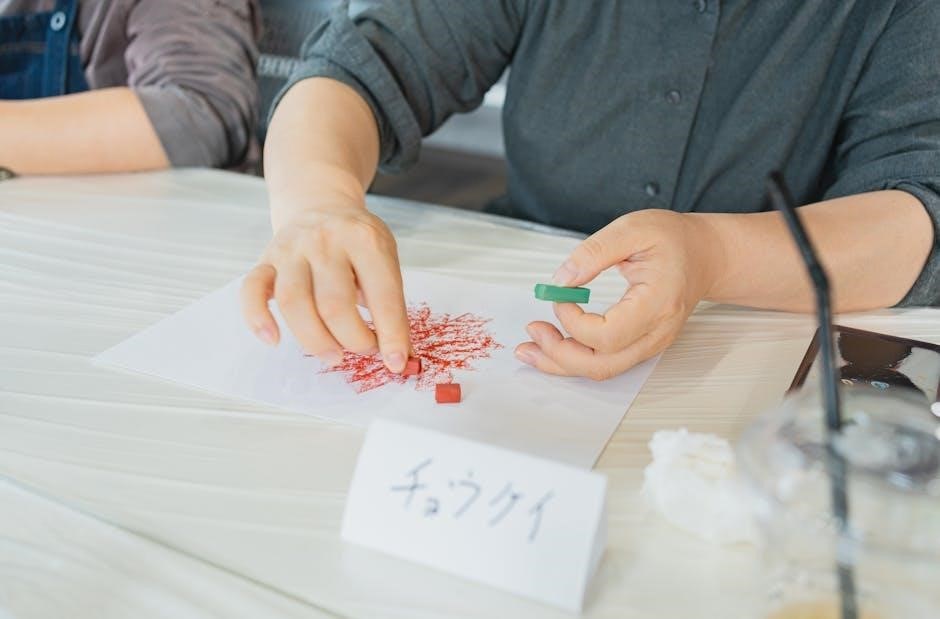Japanese joinery is an ancient craft emphasizing precision and elegance. Perfect for beginners, it teaches traditional techniques with minimal tools, offering a gateway to beautiful, functional woodworking through hands-on learning.
A Brief History of Japanese Joinery
Japanese joinery, or kigumi, has roots in ancient Japan, evolving over centuries. It originated in Buddhist temples and traditional architecture, emphasizing interlocking joints without nails or glue. The Heian period (794–1185 CE) saw its refinement, while the Edo period (1603–1868) popularized its use in furniture and housing. Influenced by Shinto and Buddhist philosophies, it reflects harmony with nature and minimalism. Today, it remains a cornerstone of Japanese woodworking, blending functionality with artistic beauty, inspiring modern woodworkers worldwide to adopt its timeless techniques.
Core Principles of Japanese Joinery
Japanese joinery revolves around precision, harmony, and minimalism. It emphasizes interlocking joints that eliminate the need for nails or glue, creating durable, functional pieces. Rooted in Shinto and Buddhist philosophies, it celebrates nature’s beauty and balance. Key principles include ma (space between elements) and wabi-sabi (acceptance of imperfection). The craft values simplicity, sustainability, and the integration of form with function, making it both an art and a science, accessible to beginners while inspiring mastery through dedication and practice.
Essential Tools for Japanese Joinery

Japanese joinery requires precision tools like chisels, hand saws, and marking gauges. These tools enable the creation of intricate, nail-free joints, perfect for traditional woodworking projects.
Traditional vs. Modern Tools
Traditional Japanese joinery relies on hand tools like chisels, hand saws, and marking gauges, emphasizing precision and craftsmanship. Modern tools, such as routers and electric planes, offer efficiency but lack the tactile connection. The Beginner’s Guide to Japanese Joinery PDF highlights both approaches, allowing learners to choose based on their preferences. While traditional tools require more skill, they ensure authenticity, whereas modern tools simplify the process for quick results. This blend makes Japanese joinery accessible to everyone, from purists to contemporary woodworkers.
Must-Have Tools for Beginners
For beginners, essential tools include a sharp chisel set, a high-quality hand saw, and a precise marking gauge. These basics enable accurate cuts and joints. A sturdy workbench, such as a traditional Japanese atedai, is also crucial. Clamps and sharpening stones are indispensable for maintaining tool edges. While modern routers can aid efficiency, traditional tools remain fundamental for mastering Japanese joinery techniques. The Beginner’s Guide to Japanese Joinery PDF emphasizes starting with these basics to build a solid foundation before exploring more specialized tools.

Basic Japanese Joinery Techniques
Japanese joinery techniques focus on precision and simplicity, introducing beginners to foundational joints like the ‘chin’ and other essential connections. Hands-on practice is key.

Common Joints and Their Uses
Japanese joinery employs various joints, such as the ‘chin’ and ‘kanawa-tsugi,’ to create durable, aesthetically pleasing connections. These joints are designed for strength and beauty, requiring no nails or glue. The ‘chin’ joint is ideal for creating right angles, while the ‘kanawa-tsugi’ excels in scarfing wood. Other common joints include the ‘mortise and tenon’ variations, tailored for specific applications. Each joint serves a unique purpose, ensuring stability and elegance in woodworking projects. These techniques are perfect for beginners to explore traditional Japanese woodworking with minimal tools and materials.
Step-by-Step Instructions for Simple Joints
Making simple Japanese joints involves precise cutting and fitting. Start by preparing your wood, ensuring it’s clean and properly sized. Use a pencil to mark the joint’s dimensions. For a basic ‘chin’ joint, cut a recess in one piece and a corresponding protrusion on the other. Use hand tools like chisels and saws for accuracy. Assemble the joint by aligning the pieces carefully. Practice is key to achieving a seamless fit. These steps emphasize minimal tools and traditional techniques, perfect for beginners to master foundational joinery skills.

Choosing the Right Materials
Selecting traditional Japanese woods like cedar, cypress, and pine ensures durability and workability. These materials align with historical practices and are ideal for beginners to master joinery techniques.

Types of Wood Commonly Used
Traditional Japanese joinery often utilizes native woods like cedar, cypress, and pine, prized for their durability and workability. These woods are historically significant and align with the aesthetic of Japanese craftsmanship. Cedar, for instance, is valued for its aromatic properties and resistance to rot, making it ideal for outdoor structures. Cypress is lightweight yet strong, while pine offers a soft, even grain that’s easy to shape. For beginners, these woods are readily available and forgiving, allowing for precise joints and a smooth learning curve in mastering traditional techniques.
Preparing Wood for Joinery
Preparing wood for Japanese joinery involves precise steps to ensure proper fit and finish. Traditional techniques emphasize using hand tools, such as Japanese saws and planes, to achieve smooth surfaces. Wood must be acclimated to the workshop environment to prevent warping. Cutting and planing are done with careful attention to grain direction to avoid tear-outs. Beginners are encouraged to use straight-grained, knot-free lumber for consistent results. Proper preparation ensures that joints fit seamlessly, aligning with the philosophy of invisible nails and self-reinforcing connections central to Japanese craftsmanship.
Safety Guidelines and Best Practices
Always wear protective gear like safety glasses and gloves. Ensure proper tool handling and maintain a clean workspace. Follow traditional techniques to minimize risks and ensure precision.
Safety Precautions for Beginners
Beginners should prioritize safety by wearing protective gear like safety glasses and gloves. Ensure tools are sharp and well-maintained to avoid accidents. Keep workspaces clean and well-lit to prevent tripping hazards. Always follow proper tool handling techniques and avoid overreaching. Start with small projects to build confidence and skill. Practice cutting and fitting joints on scrap wood before working on final pieces. Avoid wearing loose clothing that could get caught in tools. Keep long hair tied back and ensure good ventilation when working with wood finishes. Regularly inspect tools for damage and store them safely after use.

Workshop Setup and Organization
A well-organized workshop is essential for efficient Japanese joinery. Start with a clean, minimalist space that reflects traditional Japanese aesthetics. Invest in a sturdy workbench, such as an Atedai, a traditional Japanese design, to provide stability and versatility. Keep tools within easy reach to minimize movement. Designate specific areas for cutting, assembling, and storing materials. Use tool chests or shelves to keep items tidy and accessible. Avoid clutter by regularly cleaning up shavings and scraps. Proper organization enhances focus and ensures a safe, productive environment for crafting intricate joints and projects.

Resources for Further Learning
Explore Beginners Guide to Japanese Joinery PDF for step-by-step techniques. Discover free guides, books, and online communities offering detailed woodworking plans and expert advice for mastering Japanese joinery.
Recommended PDF Guides and Books
Discover essential resources like the Beginners Guide to Japanese Joinery PDF, offering step-by-step techniques for mastering traditional joints. Explore The Complete Guide to Woodworking Joinery and Japanese Woodworking: A Beginners Guide by Sean Graham. Hideo Sato’s The Complete Japanese Joinery and Jin Izuhara’s guides provide detailed insights. These resources are perfect for beginners and intermediate learners, covering tools, techniques, and projects to enhance your craftsmanship in Japanese joinery.
Online Communities and Tutorials
Engage with online forums and communities dedicated to Japanese joinery for valuable insights and support. Websites like woodcraftsman.ru offer detailed tutorials and discussions on traditional techniques. YouTube channels and woodworking blogs provide step-by-step guides, perfect for beginners. Additionally, downloadable PDFs and free resources, such as the Beginners Guide to Japanese Joinery, are widely available online. These platforms foster learning and connection, helping enthusiasts master the art of Japanese woodworking and joinery from the comfort of their own workshops.
Japanese joinery is a rewarding craft that combines precision with creativity, offering a unique approach to woodworking. With free PDF guides and online tutorials readily available, beginners can easily embark on this journey. These resources provide comprehensive step-by-step instructions and essential tips, making it accessible to everyone. Start your adventure in Japanese joinery today and uncover the beauty of creating lasting, functional pieces with minimal tools and maximum craftsmanship.
